In the ever-evolving world of music, what defines a truly great song? Is it timelessness, cultural impact, innovation, or a deeply personal connection with listeners? Rolling Stone, a renowned authority in music journalism, has once again tackled this monumental question, presenting an updated list of the All Time Greatest Songs. This revised compilation builds upon their landmark 2004 and 2021 lists, reflecting the shifting landscape of popular music and incorporating the sounds of recent years.
The original 2004 list of the 500 Greatest Songs of All Time by Rolling Stone became a cultural touchstone. Viewed countless times, it sparked debates, ignited nostalgia, and served as a guide for music lovers across generations. However, the music world doesn’t stand still. Recognizing this dynamism, Rolling Stone initiated a comprehensive reboot of the list in 2021, acknowledging the need for a more contemporary and inclusive representation of musical excellence. Now, in early 2024, another update has arrived, fine-tuning the selection to include classic tracks released by influential artists like Beyoncé, Lana Del Rey, and Taylor Swift in the intervening years.
This latest iteration of the list isn’t a radical overhaul but a thoughtful refinement. It acknowledges the enduring legacy of the 2021 list, which itself was the product of a vast survey involving over 300 artists, writers, producers, and industry experts. This update focuses on the musical output of the last three years, from 2021 to early 2024, ensuring the list remains current and reflective of today’s vibrant musical landscape.
To ensure a diverse and authoritative selection for the 2021 reboot, Rolling Stone convened a panel of over 250 voters. This esteemed group included artists spanning genres and generations, from Angelique Kidjo to Zedd, Sam Smith to Megan Thee Stallion, and M. Ward to Bill Ward. Music industry insiders, leading critics, and seasoned journalists also contributed their expertise. Each voter submitted a ranked list of their top 50 songs, and the results were meticulously tallied to create the definitive ranking.
The sheer volume of music considered is staggering. Nearly 4,000 songs received votes, highlighting the breadth and depth of musical artistry considered for this prestigious list. One of the most significant shifts from the 2004 version is the increased representation of genres beyond classic rock and soul. The updated list embraces a wider spectrum of sounds, including more hip-hop, modern country, indie rock, Latin pop, reggae, and R&B. This evolution reflects the diversification of popular music and acknowledges the groundbreaking contributions of artists across various genres. In fact, over half of the songs on the new list were not present in the 2004 edition, with a substantial refresh even within the Top 100.
The result is a list that is not only more expansive but also more inclusive, offering a richer and more nuanced vision of pop music history. It celebrates music as a living, breathing entity, constantly rewriting its narrative with every new beat, every groundbreaking artist, and every song that resonates deeply with listeners. The Rolling Stone‘s All Time Greatest Songs list continues to be a vital document of our musical heritage, sparking conversations and celebrating the power of song.
Exploring a Selection from the Updated List of All Time Greatest Songs
To provide a glimpse into the diverse and captivating selection, let’s delve into descriptions of some of the songs featured on this updated list of all time greatest songs:
-
Harry Styles, ‘As It Was’
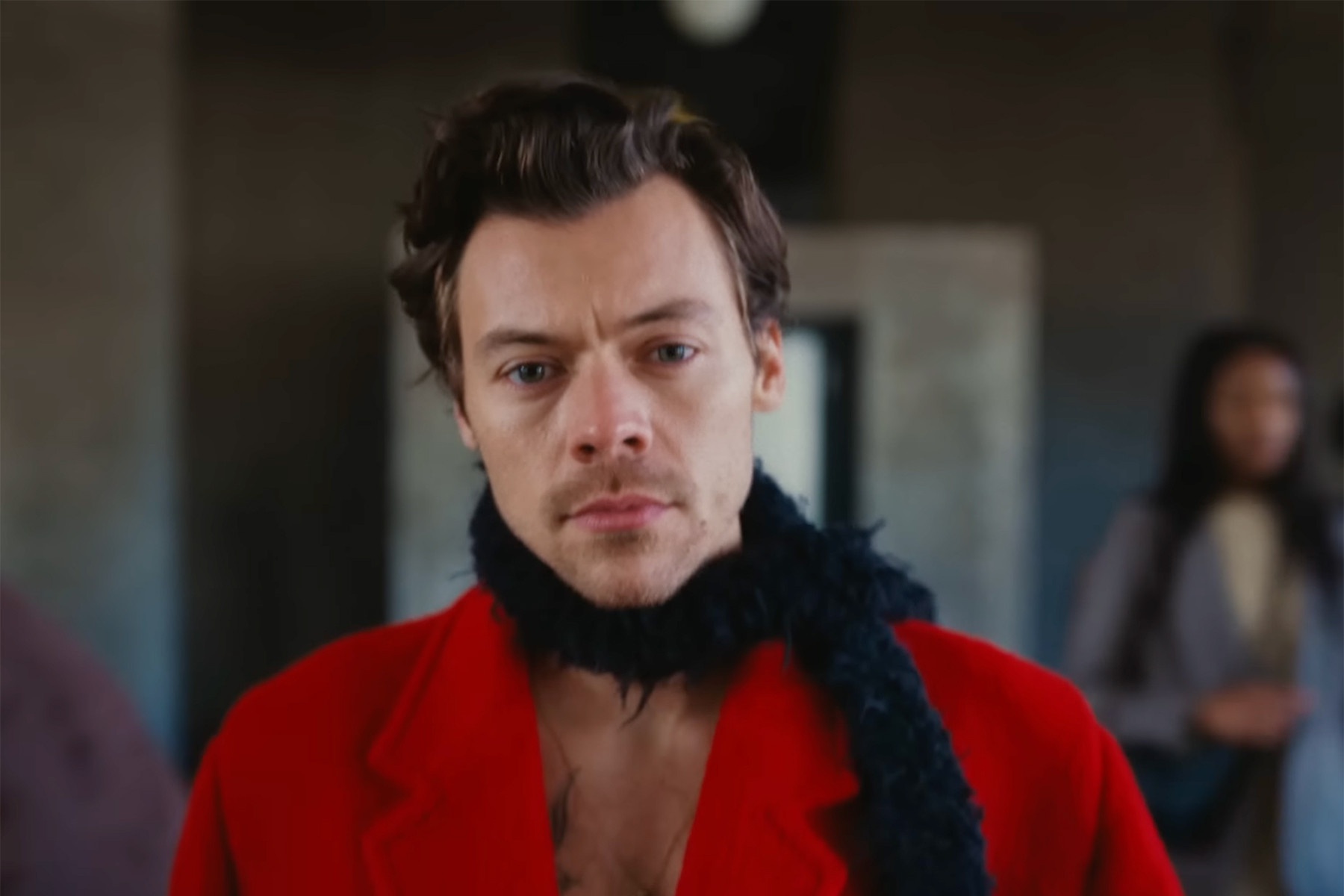 Harry Styles in a red sequined jumpsuit performing "As It Was", a top song on Rolling Stone's all time greatest songs list.
Harry Styles in a red sequined jumpsuit performing "As It Was", a top song on Rolling Stone's all time greatest songs list.Image Credit: Youtube
Harry Styles’ “As It Was,” the lead single from his third album, masterfully blends introspective lyrics with infectious pop sensibilities. The song delves into the complexities of a relationship in crisis, exploring themes of change and distance with poignant honesty. Styles’ delivery, shifting between an “agitated inner monologue” and moments of vulnerability, is perfectly complemented by the track’s shimmering synth-pop production. The song opens with a charmingly personal touch – his goddaughter Ruby’s giggle and goodnight message – before launching into a whirlwind of emotions. The “spun-sugar synths” create a captivating contrast to the lyrical torment, making the song both danceable and deeply moving. As the song progresses, layers of meaning are revealed, hinting at deeper troubles beneath the surface gloss, prompting listeners to consider “What kind of pills are you on?”. “As It Was” is a testament to Styles’ artistry, solidifying its place among the all time greatest songs through its innovative sound and emotional resonance.
-
Townes Van Zandt, ‘Pancho and Lefty’
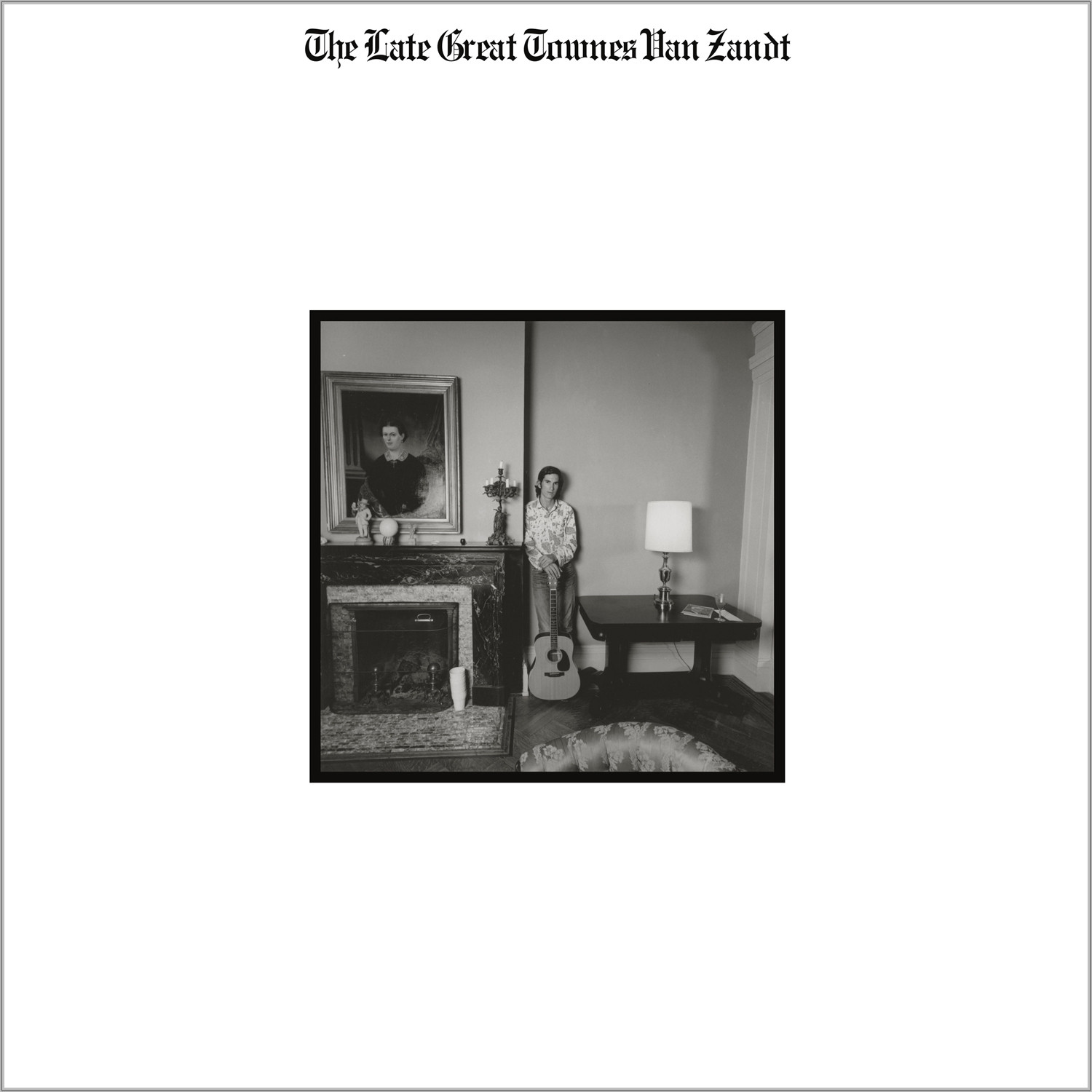 Townes Van Zandt with a guitar, a legendary country-folk songwriter of "Pancho and Lefty", a critically acclaimed all time greatest song.
Townes Van Zandt with a guitar, a legendary country-folk songwriter of "Pancho and Lefty", a critically acclaimed all time greatest song.Townes Van Zandt’s “Pancho and Lefty” is a narrative masterpiece, a sprawling story-song that unfolds like a classic Western ballad. This epic tale of a bandit and his betrayer friend has resonated deeply with audiences and artists alike. While Willie Nelson and Merle Haggard’s iconic 1983 duet brought the song mainstream country success, it is Van Zandt’s own rendition, found on his 1972 album The Late Great Townes Van Zandt, that truly captures the song’s haunting essence. His “forlorn reading” emphasizes the tragic destinies of Pancho and Lefty, imbuing the song with a raw, melancholic beauty. The opening verse is a masterclass in descriptive songwriting, painting a vivid picture of hardship and disillusionment: “Living on the road my friend/was gonna keep you free and clean/now you wear your skin like iron/your breath as hard as kerosene.” Van Zandt himself described the song’s creation as almost mystical, stating, “It’s hard to take credit for the writing, because it came from out of the blue.” This sense of inspired creation contributes to the song’s enduring power and its recognition as one of the all time greatest songs.
-
Lizzo, ‘Truth Hurts’
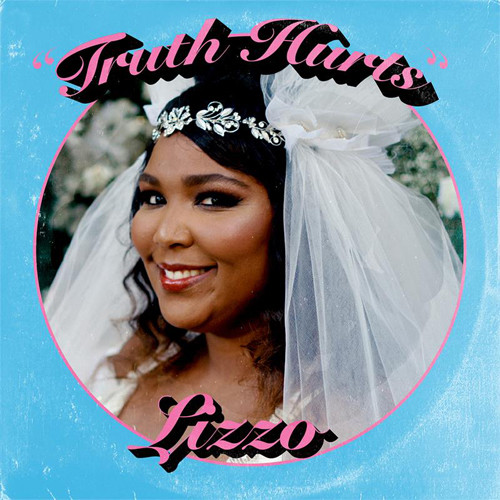 Lizzo posing confidently, the artist behind "Truth Hurts", a powerful anthem recognized among the all time greatest songs.
Lizzo posing confidently, the artist behind "Truth Hurts", a powerful anthem recognized among the all time greatest songs.Lizzo’s “Truth Hurts” is a force of nature, a “gale-force breakup banger” that became a defining anthem of self-love and empowerment. Lizzo herself declared, “That song is my life and its words are my truth,” encapsulating the deeply personal and resonant nature of the track. While a writing credit was added for Mina Lioness due to the iconic line, “I just took a DNA test, turns out I’m 100 percent that bitch,” the song’s undeniable energy and spirit are纯粹 Lizzo. Her performance is a masterclass in swagger and soulfulness, blending humor and vulnerability into a potent mix. Originally released in 2017, “Truth Hurts” gained massive momentum in 2019 after being featured in the Netflix show Someone Great. This exposure propelled it to become Lizzo’s signature hit and a cultural phenomenon. Its infectious energy and empowering message have cemented its place as one of the all time greatest songs, resonating with audiences seeking anthems of self-acceptance and resilience.
-
Harry Nilsson, ‘Without You’
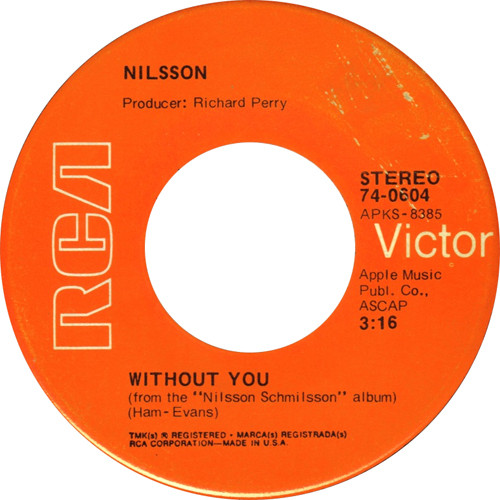 Harry Nilsson singing with a microphone, the artist known for his powerful rendition of "Without You", a classic all time greatest song.
Harry Nilsson singing with a microphone, the artist known for his powerful rendition of "Without You", a classic all time greatest song.Harry Nilsson’s rendition of “Without You” is a masterclass in vocal performance and strategic career maneuvering. Nilsson openly admitted, “We did it because my career was on the wane and we wanted something to make a hit,” revealing the pragmatic intentions behind covering Badfinger’s melancholic ballad. His initial reaction to the song was so strong that he mistakenly believed it to be a Beatles track, showcasing its inherent melodic brilliance. Producer Richard Perry amplified the song’s emotional impact by layering lush strings, creating a dramatic backdrop for Nilsson’s “desperate lunge of a vocal.” This combination of Nilsson’s raw emotion and Perry’s production proved to be a winning formula. “Without You” soared to Number One, earning a Grammy nomination for Record of the Year and becoming one of the most recognizable and emotionally resonant ballads of all time. Its enduring appeal solidifies its status as one of the all time greatest songs, demonstrating the power of interpretation and vocal delivery.
-
Carly Simon, ‘You’re So Vain’
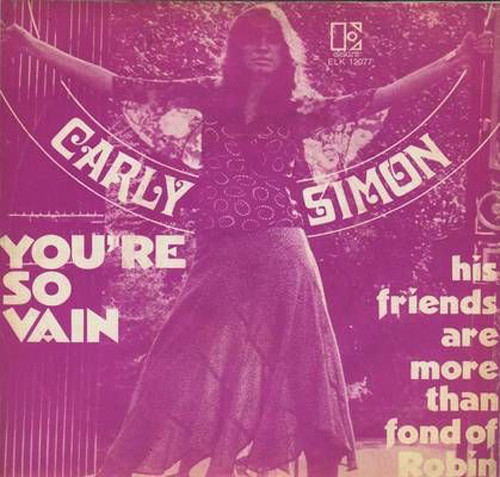 Carly Simon in a fur coat, the singer-songwriter of "You're So Vain", a legendary diss track among the all time greatest songs.
Carly Simon in a fur coat, the singer-songwriter of "You're So Vain", a legendary diss track among the all time greatest songs.Carly Simon’s “You’re So Vain” is more than just a song; it’s a cultural enigma, the “holy mother of all diss tracks.” At its heart lies one of music’s most enduring mysteries: the identity of the famously vain subject. Simon has revealed that actor Warren Beatty inspired the second verse (“Oh, you had me several years ago/When I was still naive”), but the identity of the primary target remains a topic of fervent speculation. This ambiguity has only amplified the song’s allure and staying power. Regardless of the muse, “You’re So Vain” is a masterpiece of soft-rock fire. Paul Buckmaster’s opulent orchestration and Mick Jagger’s subtle background vocals elevate the track to another level. The song’s clever lyrics, combined with its sophisticated arrangement, created a timeless classic that continues to captivate and provoke curiosity, firmly establishing it as one of the all time greatest songs.
-
Cyndi Lauper, ‘Time After Time’
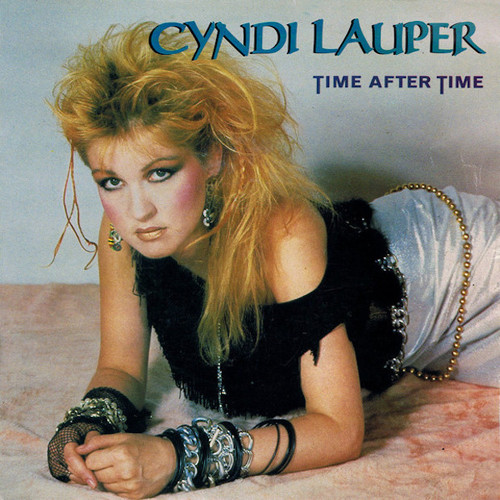 Cyndi Lauper with colorful hair and clothing, the artist behind "Time After Time", a beloved ballad among the all time greatest songs.
Cyndi Lauper with colorful hair and clothing, the artist behind "Time After Time", a beloved ballad among the all time greatest songs.Cyndi Lauper’s “Time After Time” is a testament to the power of intuition and the evolution of an artist’s vision. Lauper initially felt apprehensive about the ballad, which she co-wrote with keyboardist Rob Hyman during the final stages of her debut album, She’s So Unusual. “I asked them to please not put ‘Time After Time’ out as the first single,” Lauper confessed, fearing it was too ballad-heavy for an initial introduction. Her instincts were almost correct, but the label wisely followed the success of the upbeat “Girls Just Want to Have Fun” with “Time After Time.” The result was Lauper’s first Number One hit, proving the song’s undeniable emotional pull. “Time After Time” is an “aching ballad” that showcases Lauper’s vocal vulnerability and songwriting depth, contrasting beautifully with her more flamboyant pop anthems. Its timeless melody and heartfelt lyrics have resonated with generations, securing its place as one of the all time greatest songs and a cornerstone of Lauper’s enduring legacy.
-
The Pixies, ‘Where Is My Mind?’
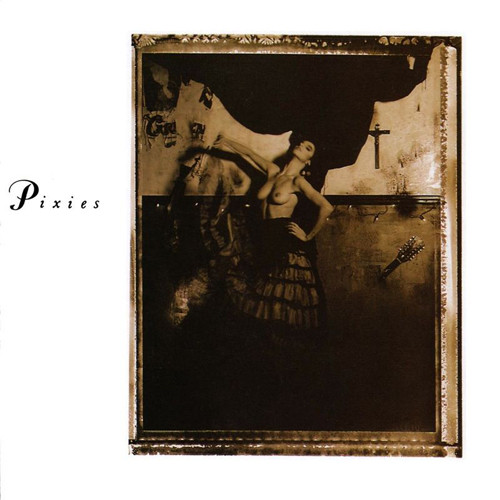 The Pixies performing live, the band known for "Where Is My Mind?", an iconic alternative track among the all time greatest songs.
The Pixies performing live, the band known for "Where Is My Mind?", an iconic alternative track among the all time greatest songs.The Pixies’ “Where Is My Mind?” perfectly encapsulates the band’s unique blend of “freakish pop instincts” and alternative rock sensibilities. In a musical landscape often dominated by gloom during the Reagan era, The Pixies stood out with their dynamic and unpredictable sound. Joey Santiago’s lead guitar riff is undeniably catchy, rivaling the hooks of many Top 40 hits, demonstrating the band’s knack for crafting unconventional yet memorable melodies. While Fight Club‘s iconic use of the song a decade after its release amplified its popularity, “Where Is My Mind?” had already become deeply influential within alternative music. Its DNA can be traced in countless alternative radio hits from Nirvana to Korn, highlighting its foundational impact. Black Francis’ cryptic response to questions about his songwriting ability – “It’s nice to have space. How much can one brain deal with?” – mirrors the song’s enigmatic and thought-provoking nature. “Where Is My Mind?” remains a quintessential alternative anthem and one of the all time greatest songs due to its innovative sound and lasting cultural impact.
-
Kanye West, ‘Stronger’
 Kanye West performing on stage, the artist behind "Stronger", a stadium-rocking hip-hop anthem recognized among the all time greatest songs.
Kanye West performing on stage, the artist behind "Stronger", a stadium-rocking hip-hop anthem recognized among the all time greatest songs.Kanye West’s “Stronger” is a bold statement of ambition and musical innovation, reflecting his stadium-sized aspirations. Inspired by his tours with U2 and the Rolling Stones in 2006, West sought to create “songs that rock stadiums” for his third album, Graduation. “Stronger” is the embodiment of this ambition, drawing direct inspiration from Daft Punk’s “Harder, Better, Faster, Stronger.” West sampled and reshaped the Daft Punk track, transforming it into a grandiose hip-hop anthem. His admiration for Daft Punk extends beyond their music to their persona: “These guys really stick with the whole not-showing-their-faces thing. Just amazing discipline — that’s straight martial-arts status.” “Stronger” is a testament to West’s ability to fuse diverse musical influences into something entirely new and impactful. Its powerful beat, anthemic chorus, and innovative sampling cemented its place as a stadium staple and one of the all time greatest songs, showcasing West’s groundbreaking approach to hip-hop production.
-
Miles Davis, ‘So What’
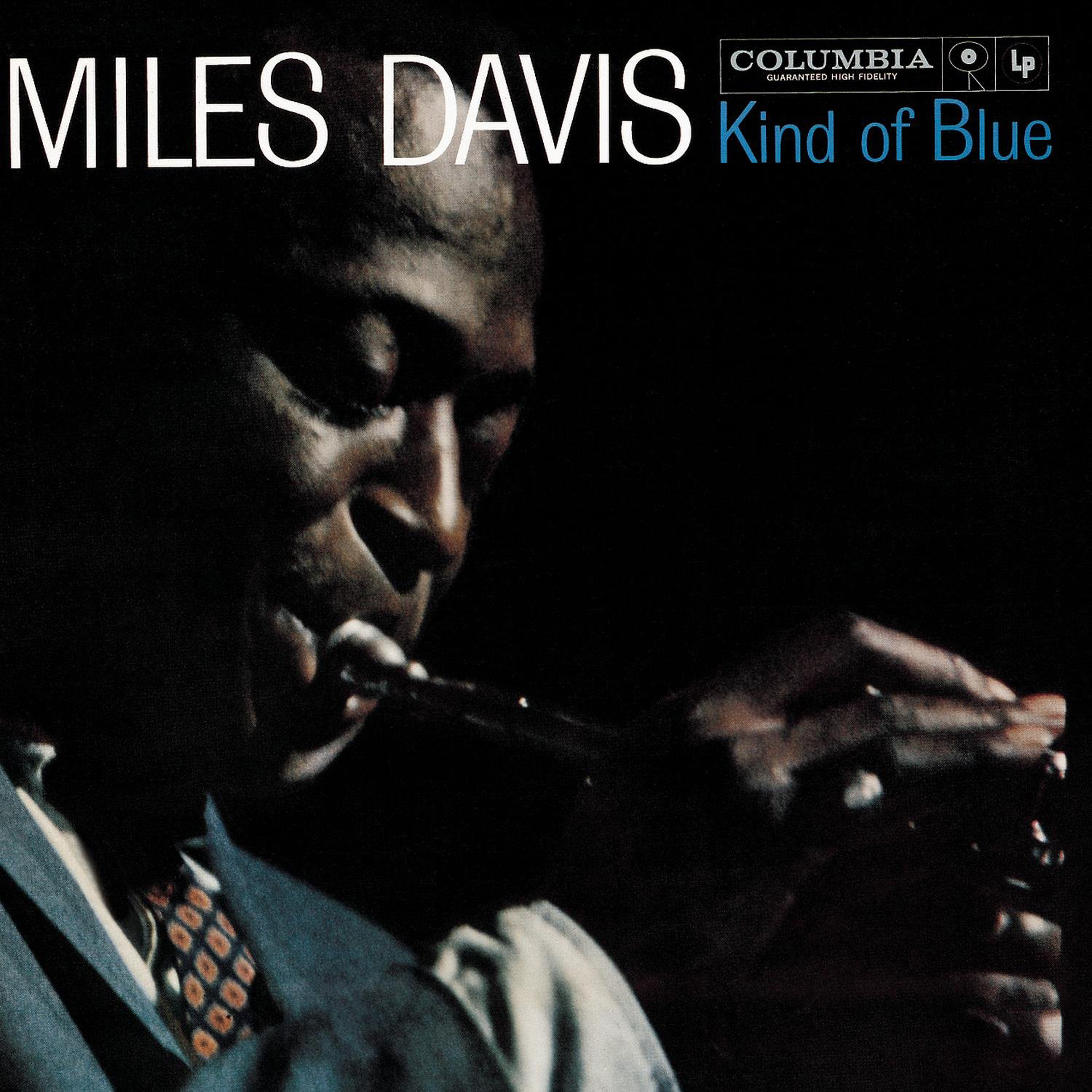 Miles Davis playing trumpet, the jazz legend behind "So What", a foundational jazz piece among the all time greatest songs.
Miles Davis playing trumpet, the jazz legend behind "So What", a foundational jazz piece among the all time greatest songs.Miles Davis’ “So What” is a jazz masterpiece, the opening track from the seminal album Kind of Blue. It’s a song that has likely “soundtracked more dinner parties” than any other on this list, its smooth and inviting atmosphere making it universally appealing. However, at the time of its release, “So What” represented a significant departure from traditional bebop. It traded complex chord changes for a more open-ended “modal style,” paving the way for a new era in jazz improvisation. Pianist Bill Evans noted that Davis often developed material shortly before recording sessions, yet the performance on “So What” sounds effortlessly cohesive. The “all-star band,” featuring jazz giants John Coltrane and Cannonball Adderley, delivers solos that have become as iconic as any in jazz history. The rhythm section of Evans, Paul Chambers, and Jimmy Cobb creates a swing that is both grounded and ethereal. “So What” is more than just a jazz standard; it is a foundational piece that continues to inspire and captivate, rightfully earning its place as one of the all time greatest songs and a cornerstone of jazz history.
-
Bad Bunny, ‘Titi Me Pregunto’
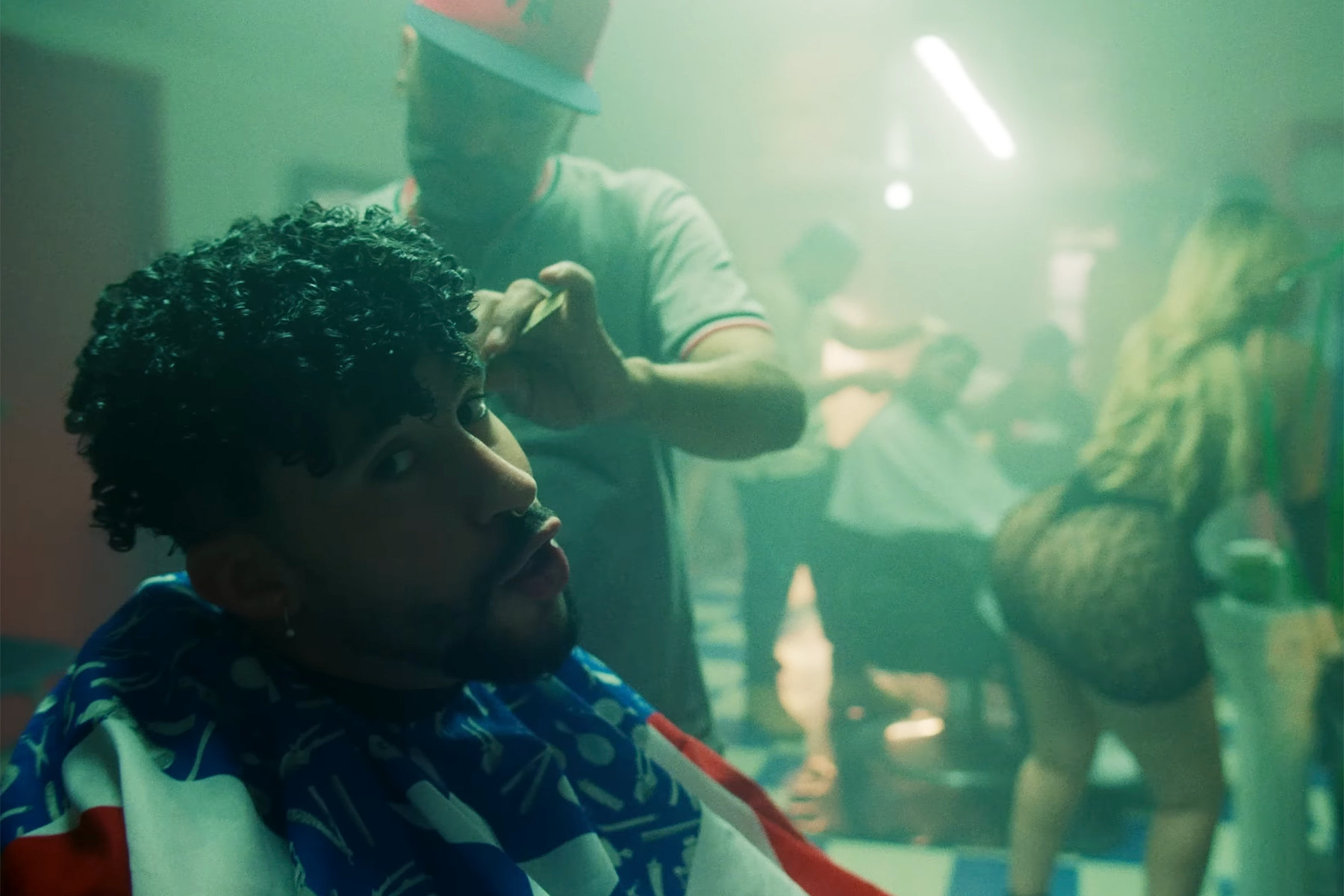 Bad Bunny performing in sunglasses, the global superstar behind "Titi Me Pregunto", a creatively eccentric all time greatest song.
Bad Bunny performing in sunglasses, the global superstar behind "Titi Me Pregunto", a creatively eccentric all time greatest song.Image Credit: Youtube
Bad Bunny’s “Tití Me Preguntó” is a vibrant showcase of the Puerto Rican superstar’s boundless creativity and “eccentric pop genius.” The song seamlessly blends disparate elements, from “frantic dembow beats” to a sophisticated sample of bachata master Anthony Santos, culminating in a “coda with a dash of Latin psychedelia.” Bad Bunny navigates these diverse sounds with effortless “panache and a healthy sense of humor.” The song’s concept is equally inventive, using the archetype of the concerned Latin American aunt inquiring about her nephew’s love life as a springboard for playful lyrical exploration. He launches into a “hilarious tirade of salacious puns” set against a bouncy party backdrop. In typical Bad Bunny fashion, the song unexpectedly transitions into moments of “moody self-reflection,” adding depth and complexity to its infectious energy. “Tití Me Preguntó” exemplifies Bad Bunny’s innovative approach to Latin pop and solidifies its position as one of the all time greatest songs through its genre-bending sound and playful lyrical approach.
-
Lil Nas X, ‘Old Town Road’
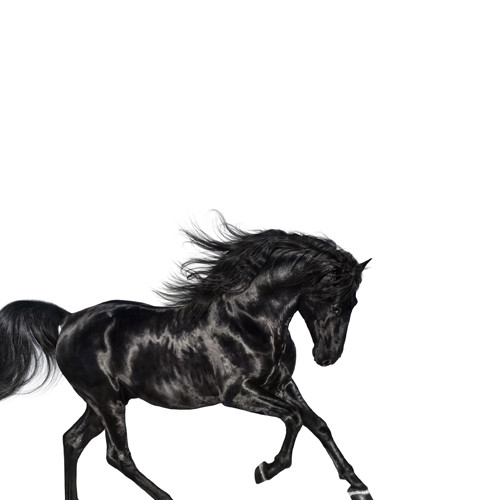 Lil Nas X in a cowboy hat, the genre-bending artist behind "Old Town Road", an unexpectedly massive all time greatest song.
Lil Nas X in a cowboy hat, the genre-bending artist behind "Old Town Road", an unexpectedly massive all time greatest song.Lil Nas X’s “Old Town Road” is an improbable global phenomenon, born from humble beginnings and fueled by internet virality. Montero Hill, then an Atlanta college dropout, created the song while sleeping on his sister’s couch, highlighting its grassroots origins. He found inspiration in a track by Dutch producer YoungKio, built around a banjo sample from a Nine Inch Nails song, a surprising fusion of influences. “I was picturing, like, a loner cowboy runaway,” Lil Nas X explained, capturing the song’s central image. Within a year, “Old Town Road” became the “longest-running Number One song of all time,” an unprecedented feat. Its genre-bending sound, blending country, hip-hop, and pop elements, resonated across demographics and cultures. The song’s concise length – just one minute and 53 seconds – belies its immense cultural impact. “Old Town Road” is a testament to the power of internet culture and genre fusion, rightfully earning its place as one of the all time greatest songs due to its unexpected rise and cross-cultural appeal.
-
The Breeders, ‘Cannonball’
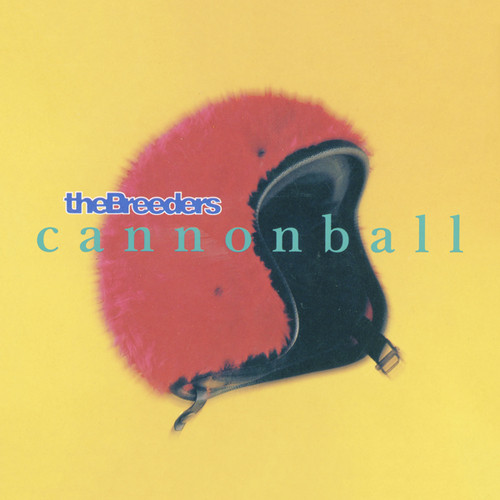 The Breeders performing on stage, the alternative rock band behind "Cannonball", an MTV hit recognized among the all time greatest songs.
The Breeders performing on stage, the alternative rock band behind "Cannonball", an MTV hit recognized among the all time greatest songs.The Breeders’ “Cannonball” is an anthem of playful defiance and alternative rock triumph. Kim Deal, after being “notified by fax” of her dismissal from the Pixies, formed The Breeders with her twin sister Kelley, who famously “didn’t know how to play guitar” at the time. This seemingly improbable pairing resulted in an “absurdist gem” that became an MTV sensation in 1993. “When people were talking about the Breeders being a one-off,” Kelley Deal recalled, “I was like ‘No, actually … the Pixies are a side project.'” This playful rivalry fueled the band’s creative energy. “Cannonball”‘s “effortlessly fun trampoline bounce” and Kim Deal’s distinctive vocals created an instantly recognizable and infectious sound. Despite The Breeders’ subsequent periods of inactivity, “Cannonball” remains a timeless alternative rock classic and one of the all time greatest songs, celebrated for its quirky energy and memorable hooks.
-
The Weeknd, ‘House of Balloons’
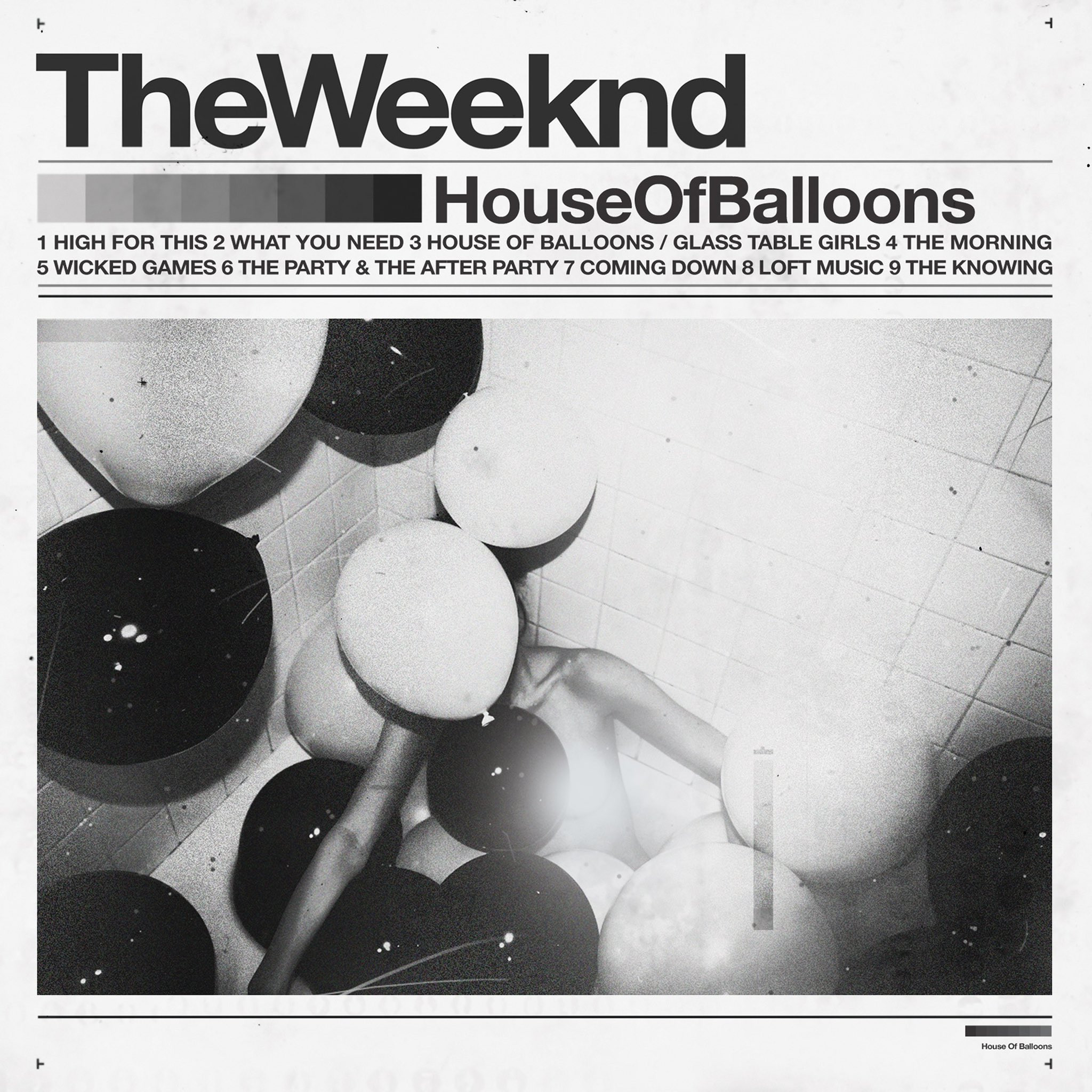 The Weeknd in a dimly lit setting, the enigmatic artist behind "House of Balloons", a genre-defining all time greatest song.
The Weeknd in a dimly lit setting, the enigmatic artist behind "House of Balloons", a genre-defining all time greatest song.The Weeknd’s “House of Balloons” marked the arrival of a major musical force, shrouded in mystery and sonic innovation. In his early career, Toronto singer-songwriter Abel Tesfaye deliberately cultivated an “enigmatic artist” persona, releasing his first Weeknd album without photos or interviews. “The whole ‘enigmatic artist’ thing, I just ran with it,” he explained. “No one could find pictures of me. It reminded me of some villain shit.” Despite the anonymity, the title track “House of Balloons” immediately established his artistic trajectory, both thematically and musically. Lyrically, it explored a complex blend of “drugs and sex, meet depression,” a raw and honest portrayal of contemporary anxieties. Musically, the song’s sample of Siouxsie and the Banshees’ “Happy House” signaled a “new direction for R&B,” incorporating alternative and electronic influences. “House of Balloons” is a genre-bending track that defined The Weeknd’s early sound and cemented its place as one of the all time greatest songs through its innovative production and emotionally resonant lyrics.
-
Solange, ‘Cranes in the Sky’
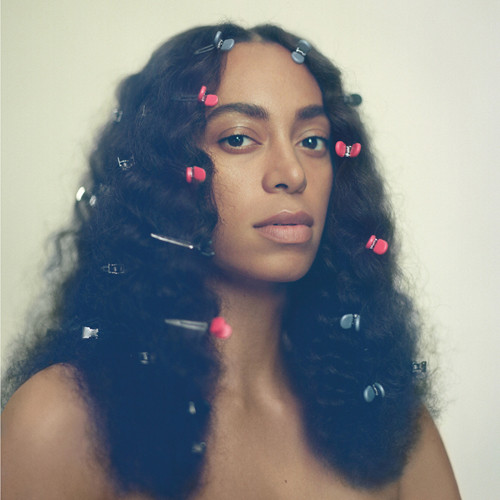 Solange Knowles in a blue dress, the innovative R&B artist behind "Cranes in the Sky", a neo-soul introspective all time greatest song.
Solange Knowles in a blue dress, the innovative R&B artist behind "Cranes in the Sky", a neo-soul introspective all time greatest song.Solange’s “Cranes in the Sky” is a deeply introspective and metaphorically rich neo-soul masterpiece. In conversation with her sister Beyoncé, Solange described the song’s inspiration, partly drawn from “overzealous real estate development” in Miami. “This idea of building up, up, up that was going on in our country at the time, all of this excessive building, and not really dealing with what was in front of us,” she explained, revealing the song’s symbolic core. Solange turned this external observation “inward to examine her own feelings about change, self-doubt, and aspiration.” Conceived years prior, the song was 완성 with producer Raphael Saadiq, resulting in a “lavish moment of neo-soul introspection.” “Cranes in the Sky” is a testament to Solange’s artistic depth and her ability to transform personal reflection into universal musical expression. Its lush instrumentation and poignant lyrics have solidified its place as one of the all time greatest songs, showcasing her innovative approach to contemporary R&B.
-
Lil Wayne, ‘A Milli’
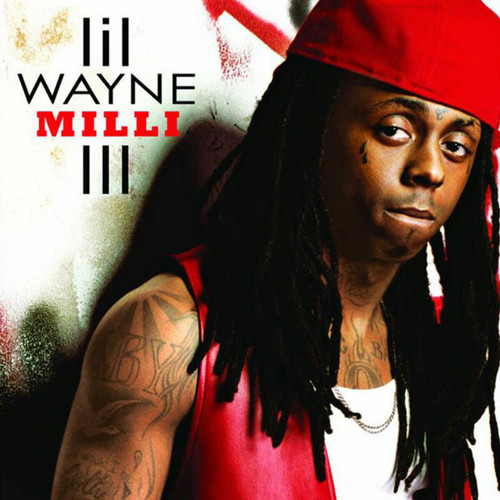 Lil Wayne rapping intensely, the influential rapper behind "A Milli", a lyrical showcase recognized among the all time greatest songs.
Lil Wayne rapping intensely, the influential rapper behind "A Milli", a lyrical showcase recognized among the all time greatest songs.Lil Wayne’s “A Milli” is a masterclass in lyrical dexterity and minimalist production. Producer Bangladesh crafted the beat by looping the opening chords of Gladys Knight and the Pips’ “Don’t Burn Down the Bridge,” then adding “a drill-like volley of trap drums.” Initially, the beat was intended for various artists on Wayne’s Young Money Entertainment, envisioned as skits for rappers like Tyga and Lil Mama. However, “A Milli” ultimately became a solo showcase for Lil Wayne’s unparalleled rapping prowess. “A Milli” is pure Weezy, “blacking out in the booth and dazzling everyone who hears him.” The stripped-down instrumental allows Wayne’s intricate rhyme schemes and relentless flow to take center stage. His lyrical density and sheer skill transformed “A Milli” into a hip-hop classic and one of the all time greatest songs, celebrated for its raw energy and Wayne’s undeniable mastery of the craft.
-
Azealia Banks, ‘212’
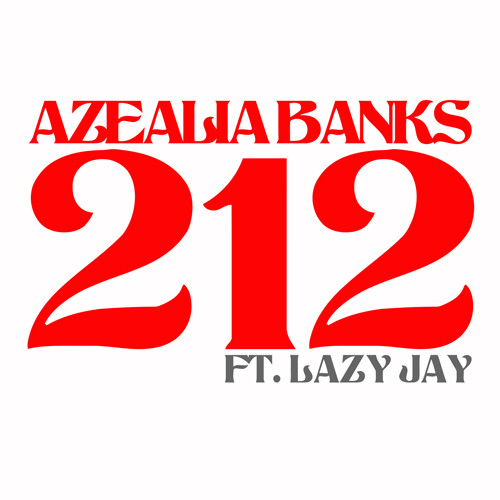 Azealia Banks performing dynamically, the provocative rapper-singer behind "212", a viral hip-house banger among the all time greatest songs.
Azealia Banks performing dynamically, the provocative rapper-singer behind "212", a viral hip-house banger among the all time greatest songs.Azealia Banks’ “212” is a raw and electrifying hip-house banger that announced the arrival of a fearless and provocative artist. In 2011, Banks, then a teenage rapper-singer, was developing her sound when producer Jacques Greene played her a “Dutch house-sounding one that was just absolutely insane.” Over the “jittery beats” of Lazy Jay’s “Float My Boat,” Banks unleashed a “ferocious” freestyle, celebrating her New York hometown and embracing unapologetic sexuality. “212” quickly went viral upon its initial release in 2011, earning Banks a deal with Interscope Records. The song’s uninhibited energy and Banks’ confident delivery served “notice that this uninhibited provocateur would not be constrained.” “212” is a landmark hip-house track and one of the all time greatest songs, celebrated for its raw energy, Banks’ fearless persona, and its impact on the sound of contemporary hip-hop.
-
Weezer, ‘Buddy Holly’
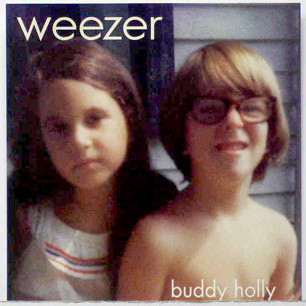 Weezer in the "Buddy Holly" music video, the band behind the geek-chic anthem "Buddy Holly", a 90s classic all time greatest song.
Weezer in the "Buddy Holly" music video, the band behind the geek-chic anthem "Buddy Holly", a 90s classic all time greatest song.Weezer’s “Buddy Holly” is the epitome of “geek chic,” a 90s anthem that celebrated nerdy romance with infectious pop hooks. Written for frontman Rivers Cuomo’s girlfriend, the song was almost excluded from Weezer’s self-titled debut, the Blue Album, due to concerns from Cuomo and Matt Sharp that it might be perceived as a “novelty song.” “We had the sense that it could be taken as a novelty song, and people aren’t going to take the album seriously,” Sharp explained. However, producer Ric Ocasek recognized the song’s undeniable appeal after hearing the recording studio receptionist humming it. “Buddy Holly” is a perfectly crafted pop song with a timeless quality. Its catchy melody, relatable lyrics about nerdy romance, and iconic music video have made it a cultural touchstone and one of the all time greatest songs, proving that geekiness can indeed be chic.
-
The Four Tops, ‘I Can’t Help Myself (Sugar Pie, Honey Bunch)’
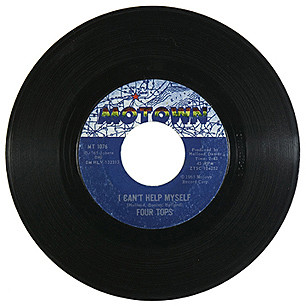 The Four Tops performing in suits, the Motown group behind "I Can't Help Myself", a soulful all time greatest song anthem.
The Four Tops performing in suits, the Motown group behind "I Can't Help Myself", a soulful all time greatest song anthem.The Four Tops’ “I Can’t Help Myself (Sugar Pie, Honey Bunch)” is a quintessential Motown anthem, filled with infectious energy and soulful vocals. The song’s title and hook were inspired by songwriter Lamont Dozier’s grandfather, who affectionately called women “sugar pie” and “honey bunch.” During the recording session, engineer Harold Taylor recalled the studio doors “banging” due to the excitement generated by the track. Despite the palpable enthusiasm, lead singer Levi Stubbs initially requested another take. Brian Holland promised to record another version later, but Stubbs’ first take was undeniably perfect, propelling the song to Number One. “I Can’t Help Myself” is a testament to Motown’s hit-making formula, blending soulful vocals, infectious melodies, and irresistible rhythms. Its enduring popularity solidifies its place as one of the all time greatest songs and a cornerstone of the Motown sound.
-
Lady Gaga, ‘Bad Romance’
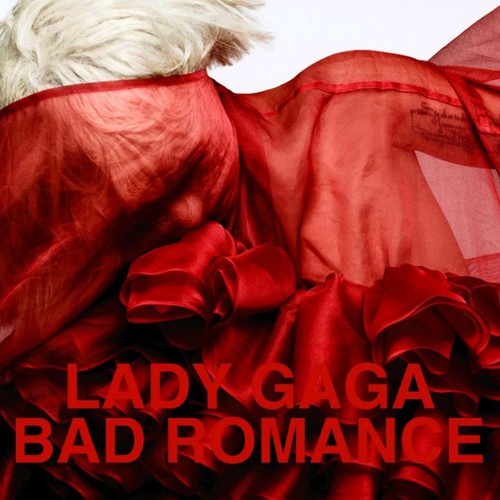 Lady Gaga in a dramatic outfit, the pop innovator behind "Bad Romance", a boundary-pushing all time greatest song.
Lady Gaga in a dramatic outfit, the pop innovator behind "Bad Romance", a boundary-pushing all time greatest song.Lady Gaga’s “Bad Romance” marked a significant evolution in her career, catapulting her to a new level of artistic “weirdness” and pop innovation. Inspired by the electronic music she encountered while touring Europe, Gaga collaborated with producer Nadir “RedOne” Khayat to create a track that pushed boundaries and defied expectations. Gaga described the song’s core concept as embracing the “deepest, darkest, sickest parts of you that you are afraid to share with anyone because I love you that much.” This bold and unconventional theme is reflected in the song’s dramatic production and Gaga’s theatrical performance. Fittingly, she debuted “Bad Romance” at Alexander McQueen’s show during Paris Fashion Week, further emphasizing its connection to high fashion and avant-garde artistry. “Bad Romance” is a bold and boundary-pushing pop masterpiece, and one of the all time greatest songs, showcasing Gaga’s fearless creativity and willingness to challenge pop conventions.
-
Robert Johnson, ‘Cross Road Blues’
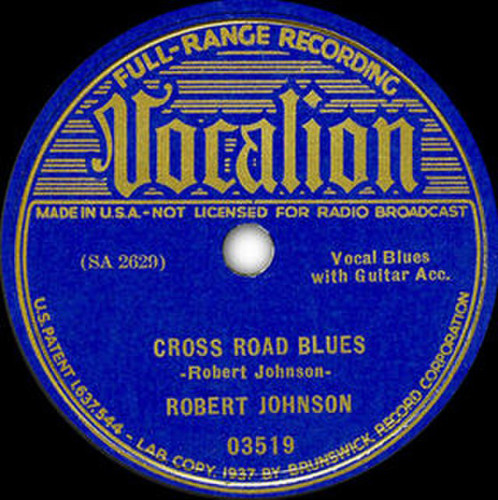 Robert Johnson playing guitar intensely, the blues legend behind "Cross Road Blues", a mythic and influential all time greatest song.
Robert Johnson playing guitar intensely, the blues legend behind "Cross Road Blues", a mythic and influential all time greatest song.Robert Johnson’s “Cross Road Blues” is a foundational blues recording, imbued with myth and raw emotional power. Recorded in a San Antonio hotel room in 1936, just two years before Johnson’s tragic death at 27, the song is steeped in blues legend and folklore. The “primal terror” in Johnson’s voice and his “mystifying slide guitar playing” captivated a generation of British rockers, including Eric Clapton, who admitted, “I could take the music only in very small measures because it was so intense.” “Cross Road Blues” is a “mythmaking statement of spiritual desolation and scorched-earth betrayal,” regardless of the veracity of the legend surrounding Johnson “selling his soul to the devil” for guitar prowess. The song’s raw emotion, haunting melody, and Johnson’s legendary status have cemented its place as one of the all time greatest songs and a cornerstone of blues music history.
-
Biz Markie, ‘Just a Friend’
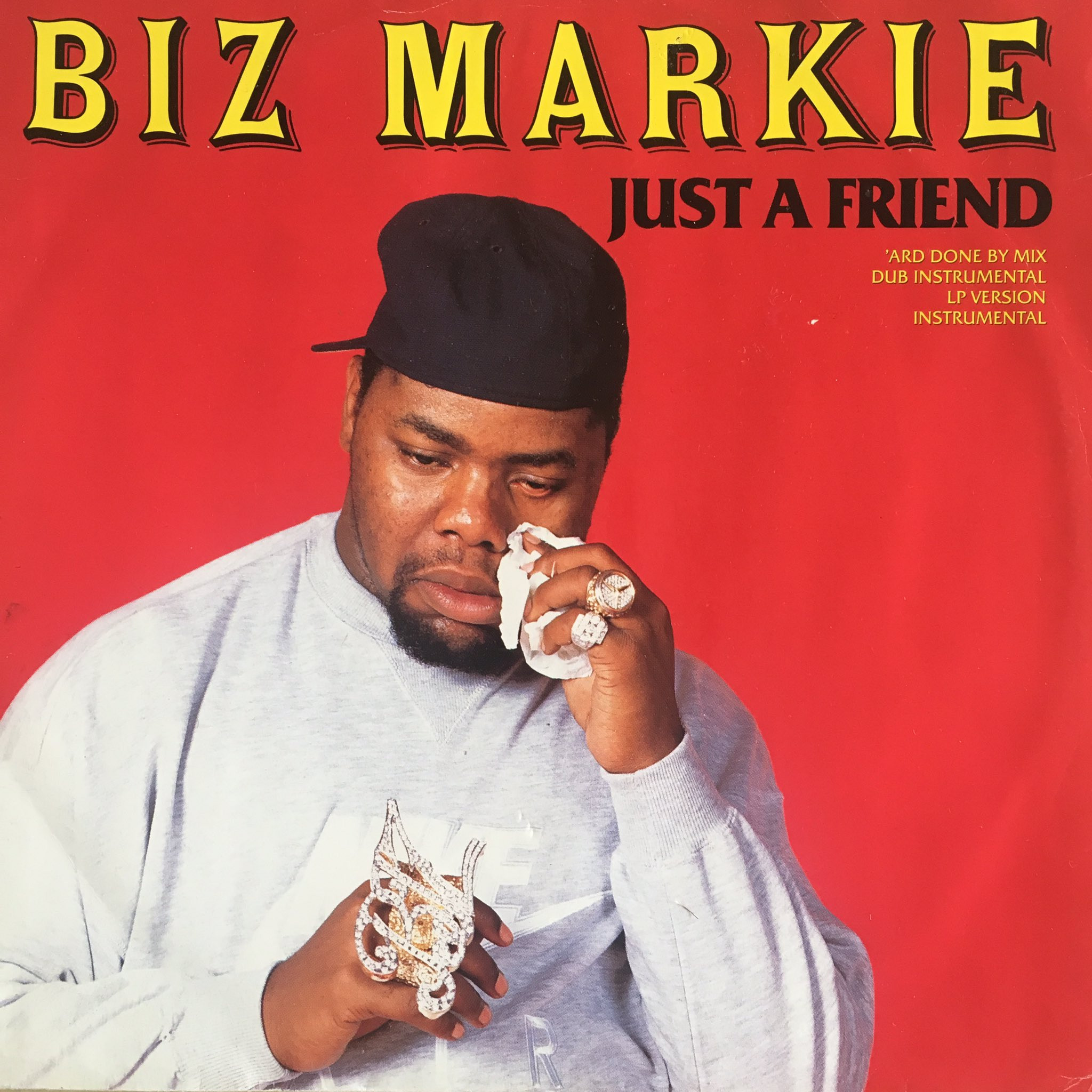 Biz Markie smiling broadly, the beloved hip-hop personality behind "Just a Friend", a feel-good all time greatest song.
Biz Markie smiling broadly, the beloved hip-hop personality behind "Just a Friend", a feel-good all time greatest song.Biz Markie’s “Just a Friend” is a feel-good hip-hop classic, celebrated for its humor, heart, and Biz Markie’s uniquely charming personality. Biz Markie, remembered as an “impossibly good-natured DJ, rapper, producer, human beatboxer, and hip-hop personality,” broke through to mainstream success with this ode to the friend zone. Built upon a “fat beat,” “plinking piano,” and Biz Markie’s intentionally “off-key singing,” the song interpolates Freddie Scott’s 1968 track “(You) Got What I Need.” The lyrics are based on a real-life experience, as Biz Markie explained in 2000: “I was talking to this girl from L.A., and every time I called her, this dude was at her house, and she’d say, ‘Oh, he’s just a friend.’ I hated that.” “Just a Friend” is a testament to Biz Markie’s unique comedic timing and musical charm, solidifying its status as one of the all time greatest songs and a beloved hip-hop anthem.
-
Santana, ‘Oye Como Va’
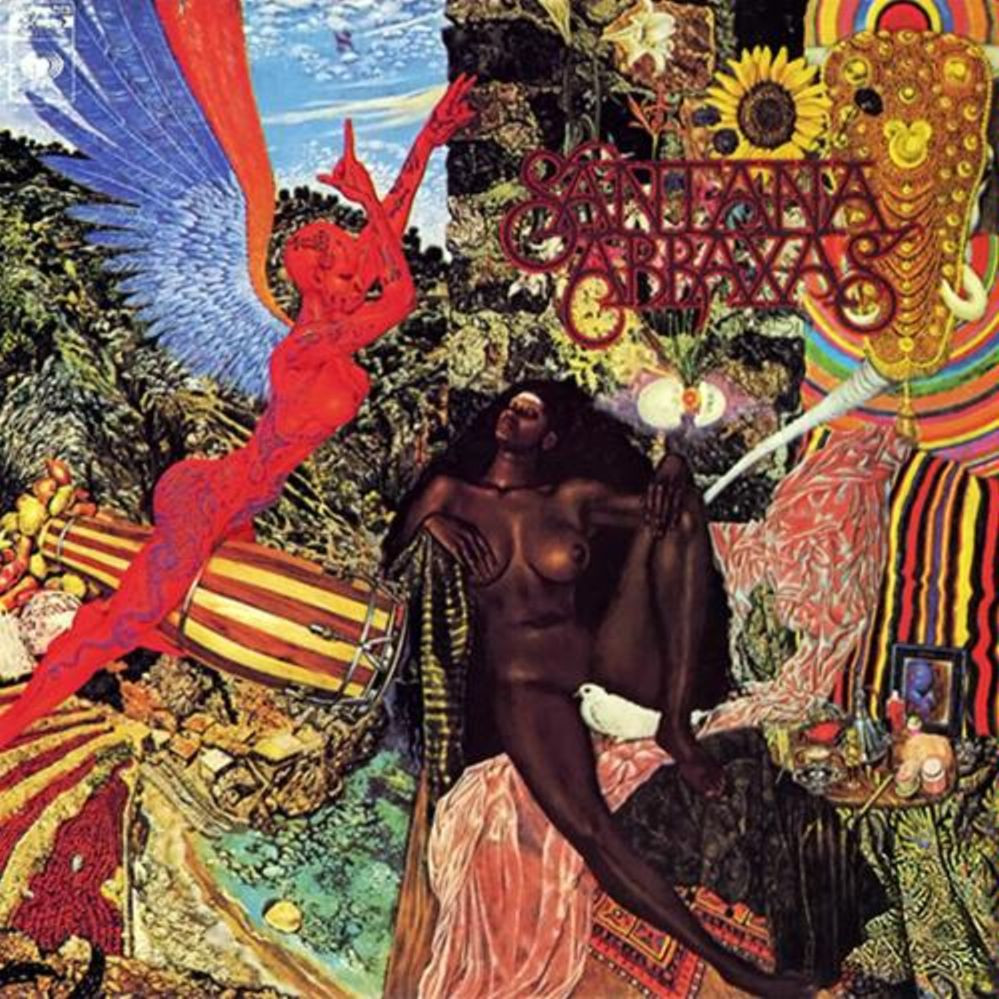 Carlos Santana playing guitar passionately, the Latin rock pioneer behind "Oye Como Va", a global hit among the all time greatest songs.
Carlos Santana playing guitar passionately, the Latin rock pioneer behind "Oye Como Va", a global hit among the all time greatest songs.Santana’s “Oye Como Va” is a Latin rock fusion masterpiece that brought Latin rhythms to a global audience. Carlos Santana’s musical journey was shaped by San Francisco’s “psychedelic explosion” in the 1960s. While his early influences were blues musicians, he made history by reimagining Tito Puente’s 1962 salsa track “Oye Como Va.” Santana retained the original’s “cha-cha pulse” but replaced the horns with Greg Rolie’s organ and his own signature “lysergic guitar flares.” Puente himself acknowledged Santana’s impact, stating, “He put our music, Latin rock, around the world, man.” “Oye Como Va” is a groundbreaking fusion of Latin rhythms and rock instrumentation, becoming a global hit and one of the all time greatest songs, instrumental in popularizing Latin rock worldwide.
-
Juvenile feat. Lil Wayne and Mannie Fresh, ‘Back That Azz Up’
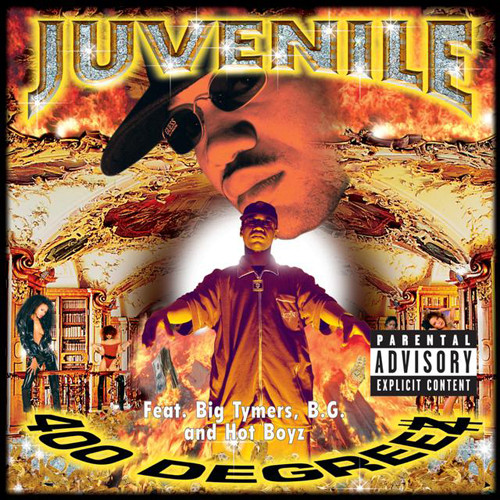 Juvenile performing energetically, the New Orleans hip-hop artist behind "Back That Azz Up", a bounce classic all time greatest song.
Juvenile performing energetically, the New Orleans hip-hop artist behind "Back That Azz Up", a bounce classic all time greatest song.Juvenile’s “Back That Azz Up,” featuring Lil Wayne and Mannie Fresh, is a New Orleans bounce classic that put the city firmly on the hip-hop map. Mannie Fresh’s “diamond-sharp productions” for Cash Money Records were instrumental in shaping the New Orleans hip-hop sound. The song’s title, reminiscent of DJ Jubilee’s “Back That Thang Up,” led to an unsuccessful lawsuit for infringement. The beat rides the “Triggerman” rhythm, a foundational element of New Orleans bounce music. Juvenile’s “shit-talking bounce rhymes” and Lil Wayne’s iconic “drop it like it’s hot” hook created an instant party anthem. Mannie Fresh recalled Lil Wayne’s immediate enthusiasm: “[He] immediately was just like, ‘Shit, I’m getting a piece of this.’” “Back That Azz Up” is a definitive New Orleans bounce track and one of the all time greatest songs, celebrated for its infectious energy and contributions to regional hip-hop.
-
The Go-Gos, ‘Our Lips Are Sealed’
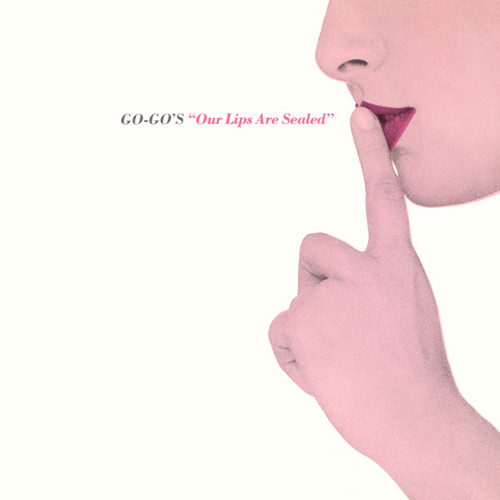 The Go-Gos in a black and white photo, the pioneering all-female band behind "Our Lips Are Sealed", a new wave all time greatest song.
The Go-Gos in a black and white photo, the pioneering all-female band behind "Our Lips Are Sealed", a new wave all time greatest song.The Go-Go’s “Our Lips Are Sealed” is a radiant new wave hit, influenced by both punk and girl-group sounds. Co-writer Jane Wiedlin cited “the Buzzcocks and Sixties girl-group stuff” as inspirations. The song’s genesis was also deeply personal, inspired by a clandestine relationship Wiedlin had with Terry Hall of The Specials. Hall received a co-writing credit as Wiedlin based the lyrics on “poetry he’d written her in a letter.” Wiedlin described the situation as “pretty personal,” acknowledging the complexities of the relationship. “Our Lips Are Sealed” is a blend of new wave energy and pop sensibility, becoming The Go-Go’s first major hit and one of the all time greatest songs. Its catchy melody and relatable themes of secret romance have ensured its enduring appeal.
-
Kris Kristofferson, ‘Sunday Mornin’ Comin’ Down’
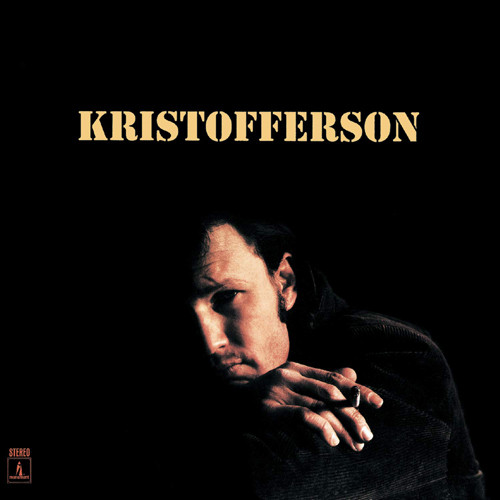 Kris Kristofferson looking contemplative, the songwriter of "Sunday Mornin' Comin' Down", a deeply emotional all time greatest song.
Kris Kristofferson looking contemplative, the songwriter of "Sunday Mornin' Comin' Down", a deeply emotional all time greatest song.Kris Kristofferson’s “Sunday Mornin’ Comin’ Down” is a song of profound desolation, capturing the depths of despair with unflinching honesty. The song’s “desolation of spirit” is so palpable that it’s almost difficult to listen to, yet this raw emotion is precisely what drew Johnny Cash to perform it on his TV show in 1970. Kristofferson recorded his own “stunning studio version” that same year, but Cash’s more accessible interpretation became the widely known version. “Sunday Mornin’ Comin’ Down” is a lyrical masterpiece, depicting the isolation and hangover-induced despair of a Sunday morning. The song’s unflinching portrayal of human vulnerability has resonated deeply with listeners and artists alike, solidifying its status as one of the all time greatest songs and a testament to Kristofferson’s songwriting genius.
-
Janet Jackson, ‘Rhythm Nation’
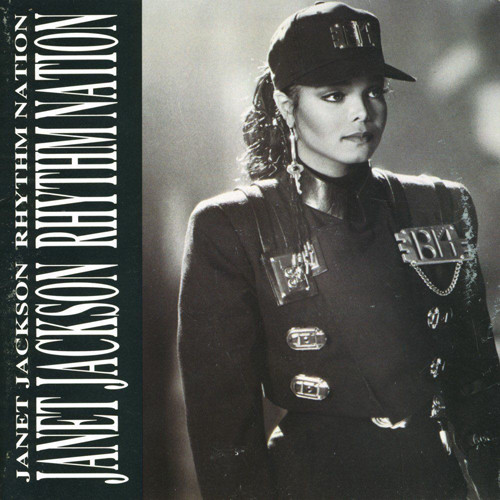 Janet Jackson in a "Rhythm Nation" outfit, the socially conscious pop icon behind "Rhythm Nation", an all time greatest song with a message.
Janet Jackson in a "Rhythm Nation" outfit, the socially conscious pop icon behind "Rhythm Nation", an all time greatest song with a message.Janet Jackson’s “Rhythm Nation” is a socially conscious pop anthem, blending danceable rhythms with a powerful message of unity and social awareness. The song emerged late in the sessions for her blockbuster album Rhythm Nation 1814. Co-producer Jimmy Jam described the song’s genesis: “switching between MTV and CNN. Watching music videos on one side and watching atrocities on the other. Somehow they all merged together. The idea for ‘Rhythm Nation’ was you can dance, but we can also do something more intelligent.” Sampling Sly and the Family Stone’s “Thank You (Falettinme Be Mice Elf Agin),” “Rhythm Nation” became a Number Two hit, showcasing Jackson’s commitment to both entertainment and social commentary. Its powerful message and innovative fusion of pop and social consciousness have made “Rhythm Nation” one of the all time greatest songs and a landmark in socially relevant pop music.
-
Curtis Mayfield, ‘Move On Up’
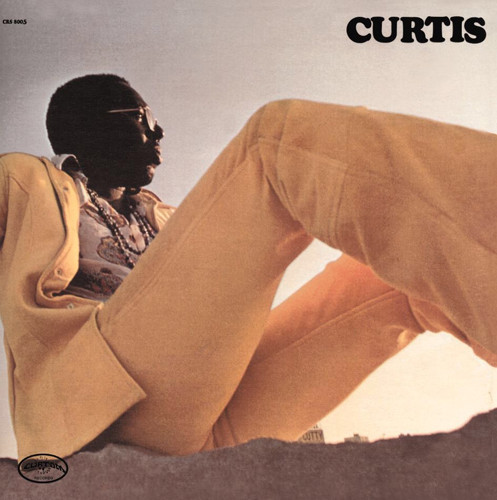 Curtis Mayfield singing soulfully, the socially conscious soul artist behind "Move On Up", an empowering all time greatest song.
Curtis Mayfield singing soulfully, the socially conscious soul artist behind "Move On Up", an empowering all time greatest song.Curtis Mayfield’s “Move On Up” is an uplifting and empowering soul anthem, blending infectious rhythms with a message of Black pride and dignity. The song is “politically empowering, morally demanding, and effortlessly propulsive,” driven by “swinging horns and tangy congas.” The extended nine-minute LP version, with its powerful drum break, laid a foundation for disco and hip-hop, demonstrating its far-reaching influence. Mayfield’s message was clear: “pride and dignity were paramount for Black America to rise.” He emphasized the song’s inclusive intent: “I’m not trying to say anything to make you think, ‘Well, this is the way, this is the only way.’ I’m trying to cover the whole subject.” “Move On Up” is a timeless soul classic and one of the all time greatest songs, celebrated for its empowering message and infectious groove.
-
Tammy Wynette, ‘Stand by Your Man’
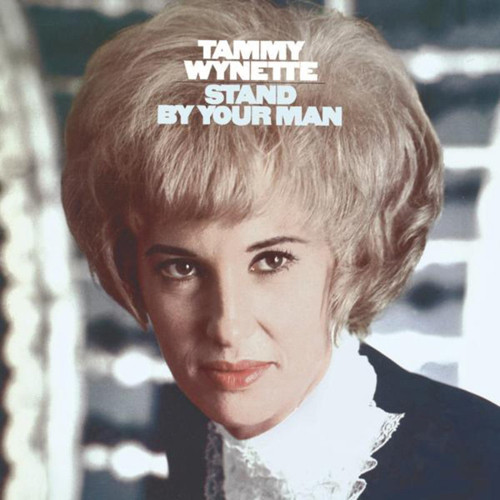 Tammy Wynette singing passionately, the country icon behind "Stand by Your Man", a controversial yet classic all time greatest song.
Tammy Wynette singing passionately, the country icon behind "Stand by Your Man", a controversial yet classic all time greatest song.Tammy Wynette’s “Stand by Your Man” is a country classic, a song of wifely devotion that has sparked both adoration and controversy. From its release, the song became a “cultural lightning rod.” While feminists criticized its message of “unquestioning fidelity,” the recording itself transcends ideological debates. Wynette’s vocal performance, shifting from vulnerability in the verses to a powerful swell in the chorus, is undeniably captivating. Billy Sherrill’s “epic sweep of production” further enhances the song’s emotional impact. “Stand by Your Man” remains a complex and enduring country classic, and one of the all time greatest songs, sparking discussions about gender roles and the power of vocal performance in music.
-
Peter Gabriel, ‘Solsbury Hill’
 Peter Gabriel in a 70s performance, the progressive rock artist behind "Solsbury Hill", a pastoral all time greatest song.
Peter Gabriel in a 70s performance, the progressive rock artist behind "Solsbury Hill", a pastoral all time greatest song.Peter Gabriel’s “Solsbury Hill” is a pastoral and introspective song, marking his departure from Genesis and the beginning of his solo career. Inspired by a reflective climb to the top of Little Solsbury Hill in Somerset, England, the song explains Gabriel’s decision to leave Genesis and forge his own path. Musically, it was a deliberate departure from Genesis’ prog-rock sound, embracing a more acoustic and folk-influenced style. The “12-string acoustic guitar lead” and pastoral melody create a sense of introspection and personal liberation. “Solsbury Hill” has become ubiquitous in movies and film trailers, testament to its evocative and universally relatable themes of change and self-discovery. Gabriel himself admitted, “Maybe I’ve let it go too much,” acknowledging the song’s widespread use. Despite its ubiquity, “Solsbury Hill” remains a deeply personal and resonant song, and one of the all time greatest songs, capturing a pivotal moment in Gabriel’s artistic journey.
-
The Animals, ‘The House of the Rising Sun’
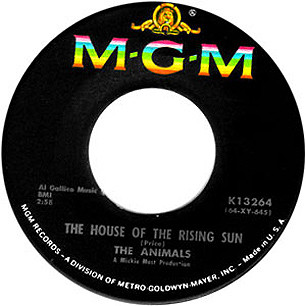 Eric Burdon of The Animals singing intensely, the blues-rock band behind "The House of the Rising Sun", a folk-rock all time greatest song.
Eric Burdon of The Animals singing intensely, the blues-rock band behind "The House of the Rising Sun", a folk-rock all time greatest song.The Animals’ “The House of the Rising Sun” is a folk-rock transformation of a traditional American ballad, imbued with blues-rock intensity. Singer Eric Burdon explained their motivation: “We were looking for a song that would grab people’s attention.” They found it in the traditional folk ballad, previously recorded by Bob Dylan in 1962. The Animals, hailing from Newcastle, England, changed the gender in the lyrics and keyboardist Alan Price created a new arrangement, adding a distinctive organ solo inspired by Jimmy Smith’s “Walk on the Wild Side.” “The House of the Rising Sun” became The Animals’ signature hit, transforming a folk ballad into a powerful rock anthem. Its dramatic arrangement and Burdon’s soulful vocals have cemented its place as one of the all time greatest songs and a landmark in the British Invasion.
-
Gladys Knight and the Pips, ‘Midnight Train to Georgia’
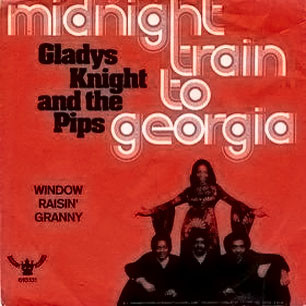 Gladys Knight and the Pips performing in sync, the soulful group behind "Midnight Train to Georgia", an R&B all time greatest song.
Gladys Knight and the Pips performing in sync, the soulful group behind "Midnight Train to Georgia", an R&B all time greatest song.Gladys Knight and the Pips’ “Midnight Train to Georgia” is a soulful and emotionally resonant R&B classic with an unexpected country origin. Songwriter Jim Weatherly originally composed it as “Midnight Plane to Houston,” changing it for Cissy Houston to something “more R&B … in order to get it onto Black radio.” Having already penned “Neither One of Us” for Gladys Knight and the Pips, Weatherly offered them “Midnight Train,” which they transformed into a Number One hit. Weatherly admitted, “I never really imagined writing R&B songs. I really thought I was writing country songs.” The song’s themes of migration and changing times resonated deeply, reflecting the 1970s shift of African Americans moving to the South. “Midnight Train to Georgia” is a soulful and timeless ballad, and one of the all time greatest songs, showcasing Gladys Knight’s powerful vocals and the Pips’ smooth harmonies.
-
Dixie Chicks, ‘Goodbye Earl’
 The Dixie Chicks performing energetically, the country group behind "Goodbye Earl", a controversial all time greatest song.
The Dixie Chicks performing energetically, the country group behind "Goodbye Earl", a controversial all time greatest song.Dixie Chicks’ “Goodbye Earl” is a murder ballad with a feminist twist, sparking both controversy and acclaim. The song’s jaunty melody and dark humor, telling the story of women poisoning an abusive husband, drew disparate reactions. Some radio stations banned it, fearing it might incite violence, while others used it to raise awareness about domestic abuse. Despite the controversy, label executives were more concerned about the song “Sin Wagon” from the same album Fly, finding its reference to “mattress dancing” more problematic. Natalie Maines recalled the relayed message: “You can’t say [that], but they love the song about premeditated first-degree murder.” “Goodbye Earl” is a bold and provocative country song and one of the all time greatest songs, sparking conversations about domestic violence and pushing boundaries within country music.
-
Mazzy Star, ‘Fade Into You’
 Hope Sandoval of Mazzy Star singing dreamily, the dream pop band behind "Fade Into You", an ethereal all time greatest song.
Hope Sandoval of Mazzy Star singing dreamily, the dream pop band behind "Fade Into You", an ethereal all time greatest song.Mazzy Star’s “Fade Into You” is the quintessential dream pop anthem, characterized by its ethereal atmosphere and blurry romanticism. Singer Hope Sandoval and guitarist David Roback were central figures in the 1980s neo-psychedelic Paisley Underground scene in Los Angeles. After Sandoval joined Roback’s band Opal, they reformed as Mazzy Star, achieving mainstream success with “Fade Into You” from their second album. The song’s “spaced-out” sound and Sandoval’s hazy vocals create a dreamy and introspective mood. Roback described their artistic approach: “We’re not so concerned about the outside world. [Each song] is its own world unto itself.” “Fade Into You” is a defining track of the dream pop genre and one of the all time greatest songs, celebrated for its atmospheric beauty and introspective mood.
-
Nirvana, ‘Come as You Are’
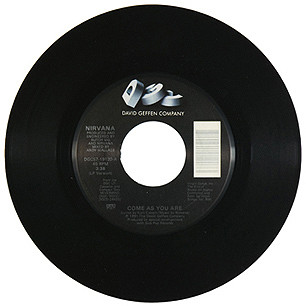 Kurt Cobain of Nirvana performing intensely, the grunge icon behind "Come As You Are", a defining all time greatest song of the 90s.
Kurt Cobain of Nirvana performing intensely, the grunge icon behind "Come As You Are", a defining all time greatest song of the 90s.Nirvana’s “Come as You Are” is a grunge anthem, characterized by its simplicity, haunting melody, and Kurt Cobain’s introspective lyrics. Cobain explained the song’s theme as being “just about people and what they’re expected to act like.” The lyrics are intentionally “contradictory,” reflecting the complexities of human interaction and expectations. The song’s iconic riff, simple yet unforgettable, was enhanced by producer Butch Vig with a “flanged, subaquatic guitar effect.” Cobain reportedly drew inspiration for the riff from a Killing Joke song, a debt Dave Grohl later acknowledged by drumming on their 2003 album. In the tragic aftermath of Cobain’s suicide, the lyric “And I swear that I don’t have a gun” took on a particularly haunting resonance. “Come as You Are” is a defining song of the grunge era and one of the all time greatest songs, capturing the angst and introspection of a generation.
-
Luther Vandross, ‘Never Too Much’
 Luther Vandross singing soulfully, the R&B balladeer behind "Never Too Much", a joyful all time greatest song.
Luther Vandross singing soulfully, the R&B balladeer behind "Never Too Much", a joyful all time greatest song.Luther Vandross’ “Never Too Much” is a joyful and buoyant R&B classic, marking his solo debut and establishing him as a major force in 80s soul music. Financed in part by money from jingles for KFC and 7UP, Vandross was encouraged to pursue a solo career by Roberta Flack. Vandross recalled her advice: “She said, ‘Luther, you’re too comfortable sitting on that stool singing “ooh and aaah.”‘ Roberta was single-handedly responsible for me starting my own career.” Her encouragement was sparked by hearing the demo of “Never Too Much,” a song that perfectly showcases Vandross’s vocal talents and joyful musicality. The song’s upbeat tempo and Vandross’s “high notes as delicate as soap bubbles” create an atmosphere of pure romantic bliss. “Never Too Much” is a quintessential 80s R&B anthem and one of the all time greatest songs, celebrated for its infectious joy and Vandross’s remarkable vocal performance.
-
Daft Punk feat. Pharrell Williams, ‘Get Lucky’
 Daft Punk performing in helmets, the electronic music duo behind "Get Lucky", a disco-revival all time greatest song.
Daft Punk performing in helmets, the electronic music duo behind "Get Lucky", a disco-revival all time greatest song.Daft Punk’s “Get Lucky,” featuring Pharrell Williams, is a disco-infused dance-floor filler that defined a year and marked a triumphant return for the French electronic duo. When Pharrell Williams offered to collaborate on Daft Punk’s fourth album, he mentioned his musical admiration for Chic legend Nile Rodgers. Serendipitously, Daft Punk had a track in progress with Rodgers himself. The result was “Get Lucky,” the lead single from their disco-flavored album Random Access Memories. The song “rose like a phoenix,” becoming a global phenomenon. Pharrell Williams noted Daft Punk’s leading role in musical innovation: “I think the robots are leading. Daft Punk, they’re definitely leading.” “Get Lucky” is a masterful blend of disco and electronic music and one of the all time greatest songs, revitalizing disco for a new generation and showcasing Daft Punk’s innovative production.
-
Joni Mitchell, ‘Help Me’
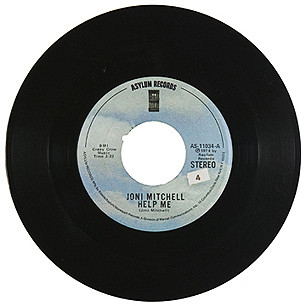 Joni Mitchell playing guitar soulfully, the singer-songwriter icon behind "Help Me", a jazz-infused all time greatest song.
Joni Mitchell playing guitar soulfully, the singer-songwriter icon behind "Help Me", a jazz-infused all time greatest song.Joni Mitchell’s “Help Me” is a sult


